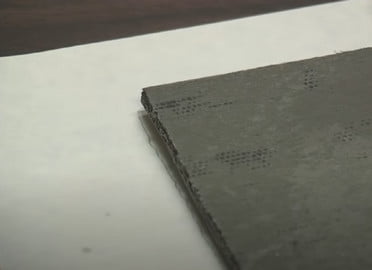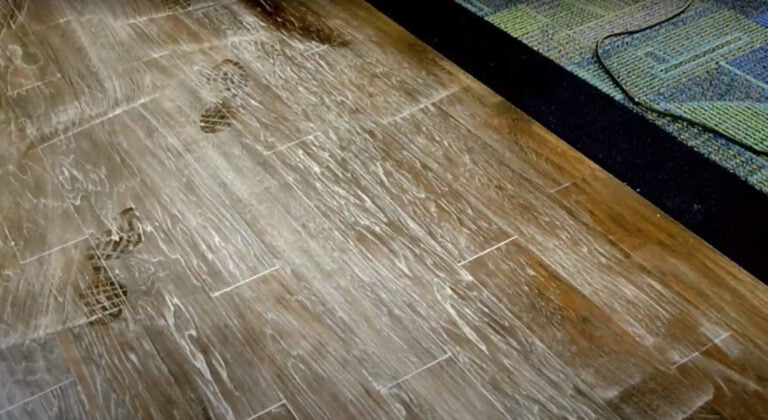How To Fix Dents In Vinyl Flooring
Vinyl flooring is a popular and affordable choice for many homeowners, but it can still be prone to dents and…
Vinyl flooring is a popular and affordable choice for many homeowners, but it can still be prone to dents and scratches over time. While these imperfections may seem unsightly, there are actually several simple and effective methods for fixing them without the need for costly repairs or replacement.
In this article, we will guide you through the process of identifying the type of vinyl flooring you have, preparing the area for repair, and using either heat or a filler to fix dents of varying sizes.
We’ll also provide some helpful tips for maintaining your vinyl flooring and preventing future damage, so you can enjoy a flawless and long-lasting floor.
So let’s get started and learn how to fix those pesky dents in your vinyl flooring!
Identifying the Type of Vinyl Flooring
You’ll want to figure out what type of vinyl you’re working with so you can properly address any imperfections. There are three main vinyl flooring types: sheet vinyl, vinyl planks, and vinyl tiles. Each type has its own unique characteristics and requires different repair methods.
Sheet vinyl is a large, continuous piece of flooring that’s usually installed in one piece. Vinyl planks and tiles, on the other hand, are individual pieces that can be arranged in different patterns. To identify the type of vinyl flooring you have, look for patterns or seams. Sheet vinyl will have no visible seams, while vinyl planks and tiles will have visible seams between each piece.
Another way to identify the type of flooring is to check the manufacturer’s label on the back of the flooring. This should tell you the exact type of vinyl you have. Identifying damage patterns is also important when trying to fix dents in vinyl flooring. For sheet vinyl, you may see a large dent or indentation in the flooring. With vinyl planks and tiles, you may see a smaller dent or scratch in one piece.
Once you’ve identified the type of flooring and the damage pattern, you can move on to the next steps of repairing the dent.
Preparing the Area for Repair
Before starting, it’s important to clear the area of any furniture or items that may obstruct the repair process. This will ensure that you have plenty of space to work and won’t accidentally damage anything in the process.
Once the area is clear, take a moment to clean the floor around the dent with a damp cloth or mop. This will remove any dirt or debris that may interfere with the repair.
Next, gather your repair tools. You’ll need a hair dryer, a clean cloth, and a can of compressed air. The hair dryer will be used to heat the vinyl around the dent, making it more pliable and easier to repair.
The clean cloth will be used to protect the vinyl from the heat of the hair dryer. The can of compressed air will be used to cool the vinyl once it has been heated, helping to set the repair in place.
Now that you have your cleaning tips and repair tools ready, it’s time to get started. Begin by heating the vinyl around the dent with the hair dryer, using a circular motion to evenly distribute the heat.
Once the vinyl is warm and pliable, place the clean cloth over the dent and gently press down, using your fingers to mold the vinyl back into shape. Be careful not to press too hard, as this can cause the vinyl to crack or tear.
After molding the vinyl back into shape, use the can of compressed air to cool the area and set the repair in place. Repeat as necessary until the dent is completely removed.
Using Heat to Remove Dents
To remove those pesky dents, heat is your best friend – grab a hair dryer, some compressed air, and a cloth to get started.
Before using a heat gun, it’s important to consider safety measures. Make sure the area is well-ventilated and keep the gun at least 6 inches away from the vinyl surface to prevent any damage. Avoid using a heat gun on a damaged or cracked vinyl floor as it could make the situation worse.
Using a hair dryer is a common and effective method for removing dents in vinyl flooring. Simply aim the hair dryer at the dent and heat it up for several minutes. The heat will cause the vinyl to expand and release the dent. Once it’s heated, use a cloth to push the vinyl back into place.
For deeper dents, you can try using compressed air. Hold the can upside down and spray the dent for several seconds. This will cause the vinyl to freeze and contract, which should help it pop back into shape.
While heat is an effective way to remove dents in vinyl flooring, there are alternative methods as well. If you’re not comfortable with using a heat gun or hair dryer, you can try using boiling water. Boil a pot of water and pour it over the dent. Use a cloth to push the vinyl back into place while it’s still hot.
Another option is to use a suction cup. Place the suction cup over the dent and pull it up. This creates a vacuum that should help release the dent. Be patient and try different methods until you find what works best for your situation.
Using a Filler to Fix Larger Dents
If you’re dealing with a bigger indentation, don’t despair, there’s a solution that involves using a filler.
Vinyl filler application is a simple and cost-effective way to fix larger dents in your vinyl flooring. Here are some steps on how to use a filler to repair your flooring:
-
First, choose the right repair kit for your vinyl flooring. It’s important to select a kit that matches the color and texture of your flooring. Make sure to read the instructions carefully before starting the repair process.
-
Next, clean the damaged area with warm water and a mild detergent. Use a soft cloth to dry the area and remove any debris or dust. This will help the filler to adhere properly to the surface.
-
Apply the filler to the damaged area and smooth it out evenly with a putty knife. Make sure to follow the instructions on the kit and apply a sufficient amount of filler to cover the dent completely. Let the filler dry completely before walking on the repaired area.
In summary, using a filler is an effective way to fix larger dents in your vinyl flooring. By following these simple steps and choosing the right repair kit, you can easily restore the appearance and functionality of your flooring. Remember to take your time and follow the instructions carefully to ensure the best results.
Finishing Touches and Maintenance Tips
Now that your vinyl flooring is repaired, it’s important to know how to maintain it and add some finishing touches to make it look its best. Caring for vinyl floors is relatively easy.
Sweep or vacuum the floor daily to remove dirt and debris, and mop it with a damp mop and a vinyl floor cleaner once a week. Avoid using abrasive cleaners or scrub brushes that can damage the surface of the vinyl.
If you spill something on the floor, clean it up immediately to prevent stains and damage. Preventing future damage is also important.
Place mats at entryways to catch dirt and debris before it can scratch the vinyl surface. Use furniture pads under heavy objects to prevent dents and scratches. Avoid wearing high heels or shoes with cleats on vinyl floors, as they can leave marks. If you have pets, keep their nails trimmed to prevent scratches.
In addition to caring for and preventing damage to your vinyl floors, adding some finishing touches can really make them shine. Consider adding a rug or runner to add some color and texture to the space.
If you have a large room, consider breaking it up with a patterned rug or using different colored tiles to create a unique design. Finally, add some plants or artwork to the space to make it feel warm and inviting.
With these tips, your vinyl flooring will look great for years to come.
Conclusion
Overall, fixing dents in vinyl flooring is a manageable task that can save you from having to replace the entire floor. By identifying the type of vinyl flooring you have and preparing the area properly for repair, you can effectively remove dents and restore your flooring to its former glory.
Using heat or a filler depending on the size of the dent, you can effectively remove dents from your vinyl flooring. Once you’ve completed the repair, it’s important to take care of your vinyl flooring to prevent future damage. Regular cleaning and maintenance can help keep your floors looking great for years to come.
With these tips in mind, you can confidently tackle any dents in your vinyl flooring and enjoy a beautiful, durable surface in your home.



